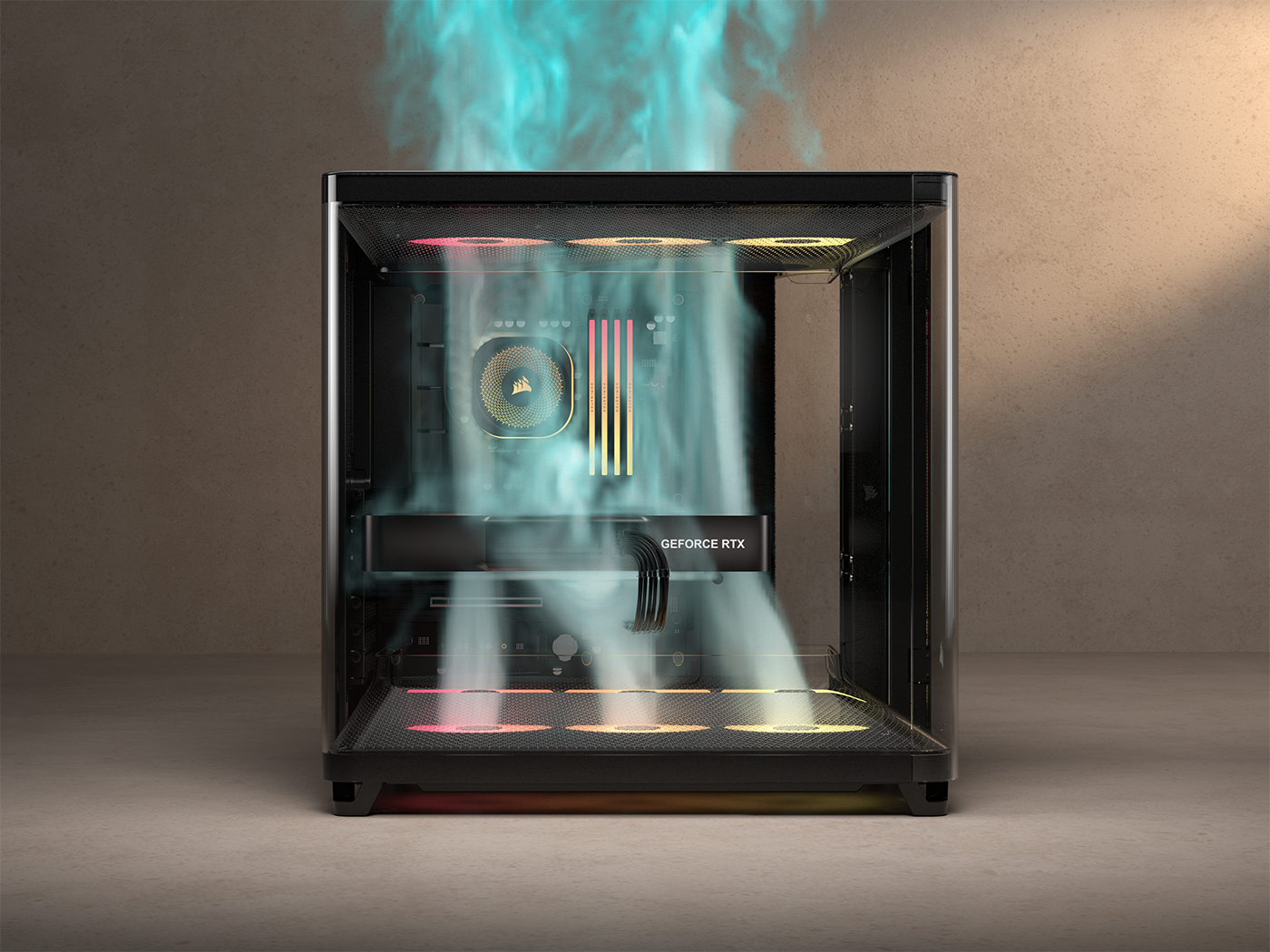In a move designed to shake up the enthusiast PC case market, Corsair has officially launched the AIR 5400, a groundbreaking mid-tower chassis built on a revolutionary triple-chamber architecture. The launch is a clear and ambitious statement, with the company aiming to “redefine what’s possible in PC design and performance”.
At the heart of the AIR 5400 is a design philosophy centered on solving one of the most persistent thermal challenges in modern high-performance PCs: the heat generated by power-hungry CPUs and GPUs interfering with one another.
The New Contender: Corsair Reimagines High-Performance Airflow
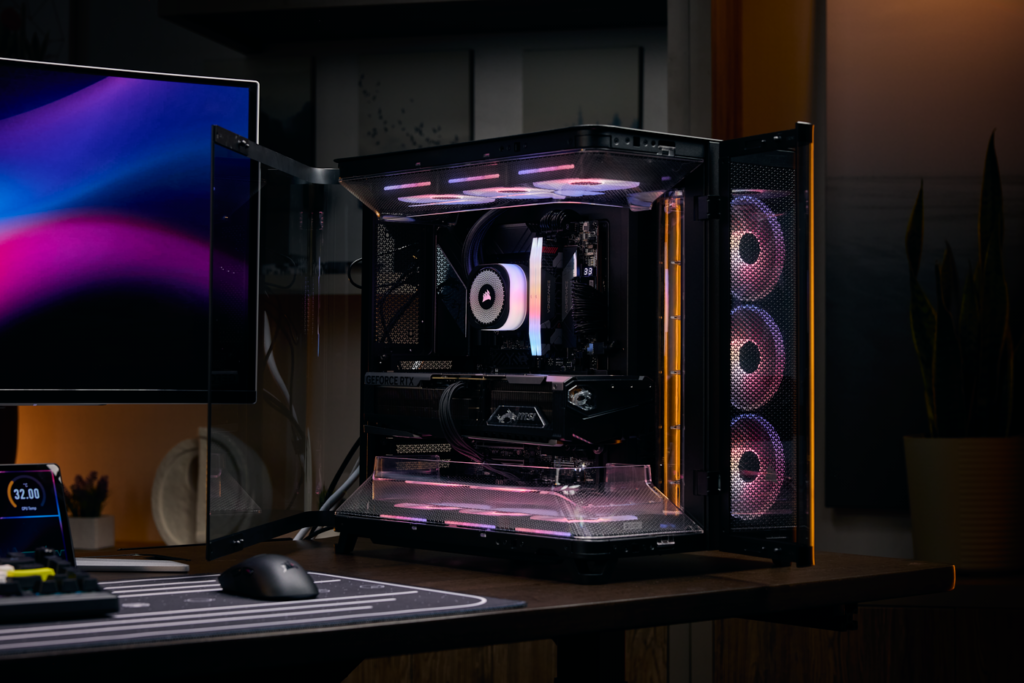
The core premise of the AIR 5400 is the complete physical and thermal isolation of the system’s hottest components. It divides the interior into three distinct cooling zones: one for the CPU, one for the GPU and motherboard, and a third for the power supply and storage. This layout directly confronts a fundamental weakness in many contemporary case designs, where a top-mounted CPU liquid cooler is often forced to ingest hot air exhausted by the graphics card below it, significantly hampering CPU cooling efficiency.
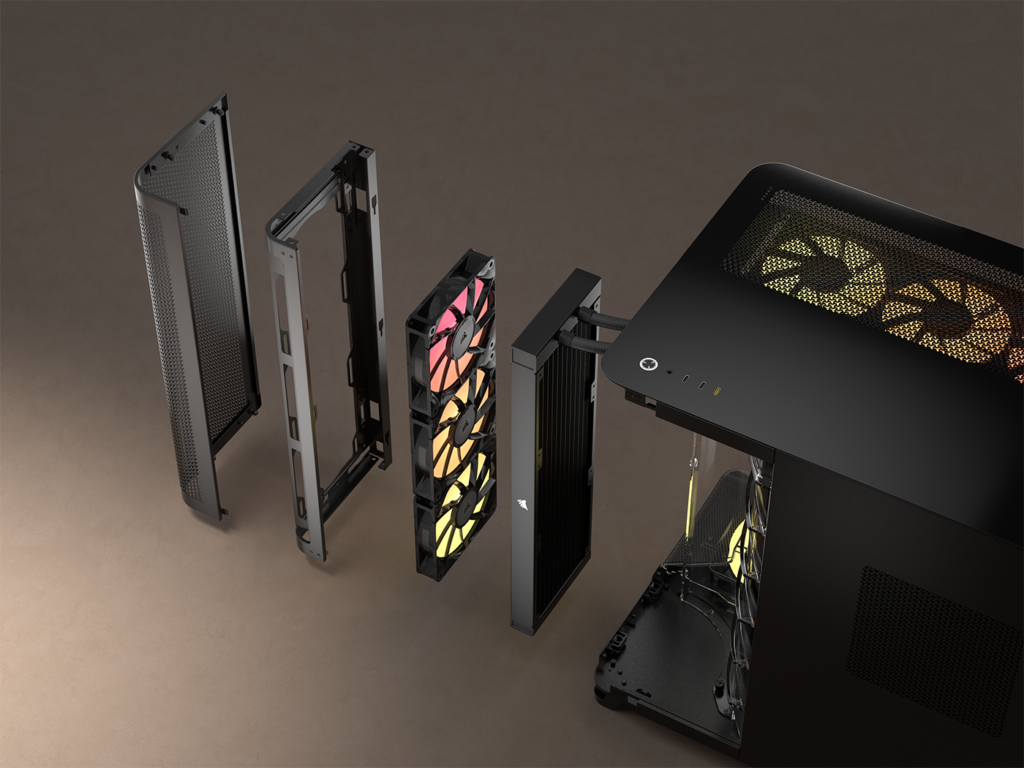
Garnering significant attention and multiple “Best of Computex” awards when its prototype was unveiled in May 2025, the AIR 5400 enters the market with considerable momentum. Its premium positioning is underscored by a starting price of $229.99 for the ARGB model, targeting the serious enthusiast who, in the words of Corsair CEO Thi La, “wants it all with exceptional cooling, silent performance, and a showcase-worthy design”.
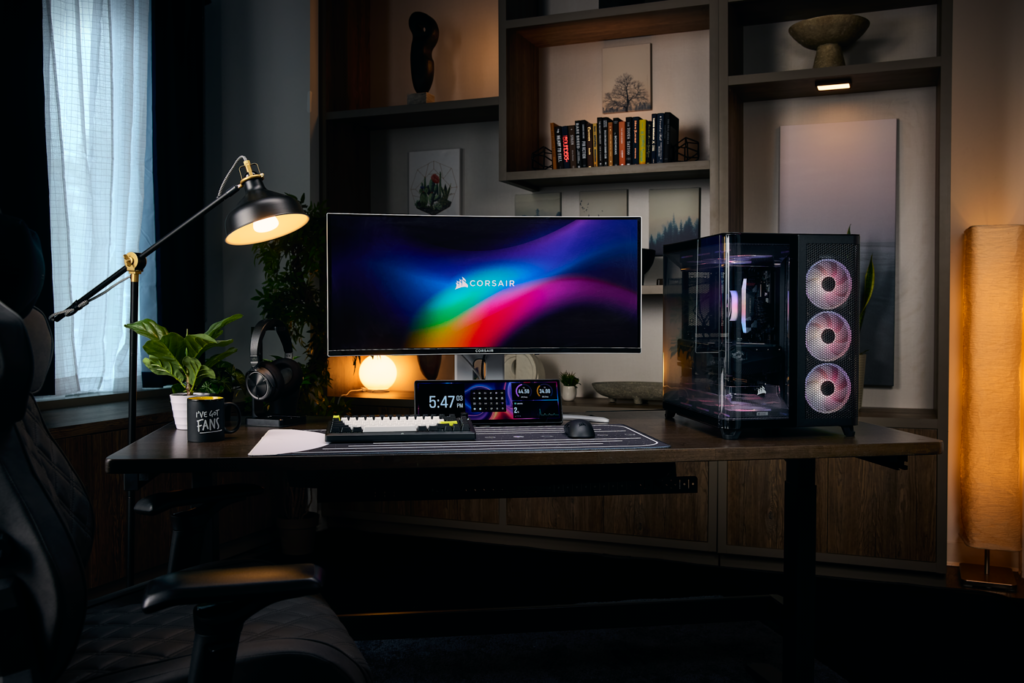
This launch, however, is more than just a new product release; it represents a calculated strategic maneuver by Corsair to reclaim its mantle as a market innovator. The company’s own press materials make this intent explicit, stating, “Just as Corsair brought dual-chamber cases into the mainstream in 2013 with the original AIR 540, it is poised to once again disrupt the status-quo”.
By focusing on a novel cooling philosophy of total thermal isolation, Corsair is attempting to steer the conversation away from iterative improvements and back toward foundational thermal engineering.
A Legacy of Airflow: Revisiting the Game-Changing Carbide AIR 540
To fully appreciate the ambition behind the AIR 5400, it is essential to look back at its celebrated predecessor, the Carbide AIR 540. Launched in 2013, the AIR 540 was a landmark product that brought the dual-chamber concept to the mainstream DIY market.
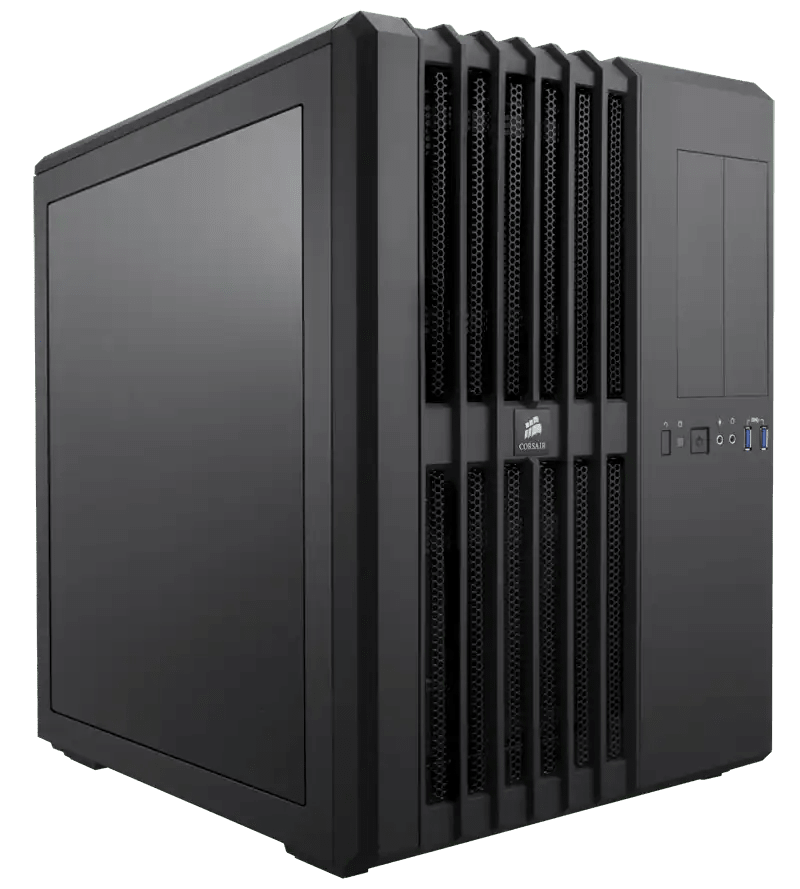
Its success was built on several key strengths:
- Ease of Build: It was widely praised as an “absolute joy to build a big gaming rig into” due to its spacious main compartment.
- Cable Management: It relegated the PSU, drive cages, and cable mess to a hidden rear chamber.
- Aesthetics: By hiding the “nasty python’s nest of cables,” it empowered even novice builders to create exceptionally clean-looking systems.
However, a critical retrospective also reveals flaws that provided a clear roadmap for its successor’s improvements, including flimsy side panels, a lack of dust filters (especially for the PSU), and limited, awkward storage options.
The success of the Carbide AIR 540 can be seen as a direct precursor to the modern “showcase” or “fishtank” PC case trend, popularizing the philosophy of separating the “show” components from the functional “go” components—a principle that underpins the immensely popular Lian Li O11 Dynamic series.
Deconstructing the Triple-Chamber: An Engineering Deep Dive
The AIR 5400’s architecture is a masterclass in purposeful design, with each of its three chambers engineered to perform a specific thermal function.
Chamber 1: The CPU Cooler Box
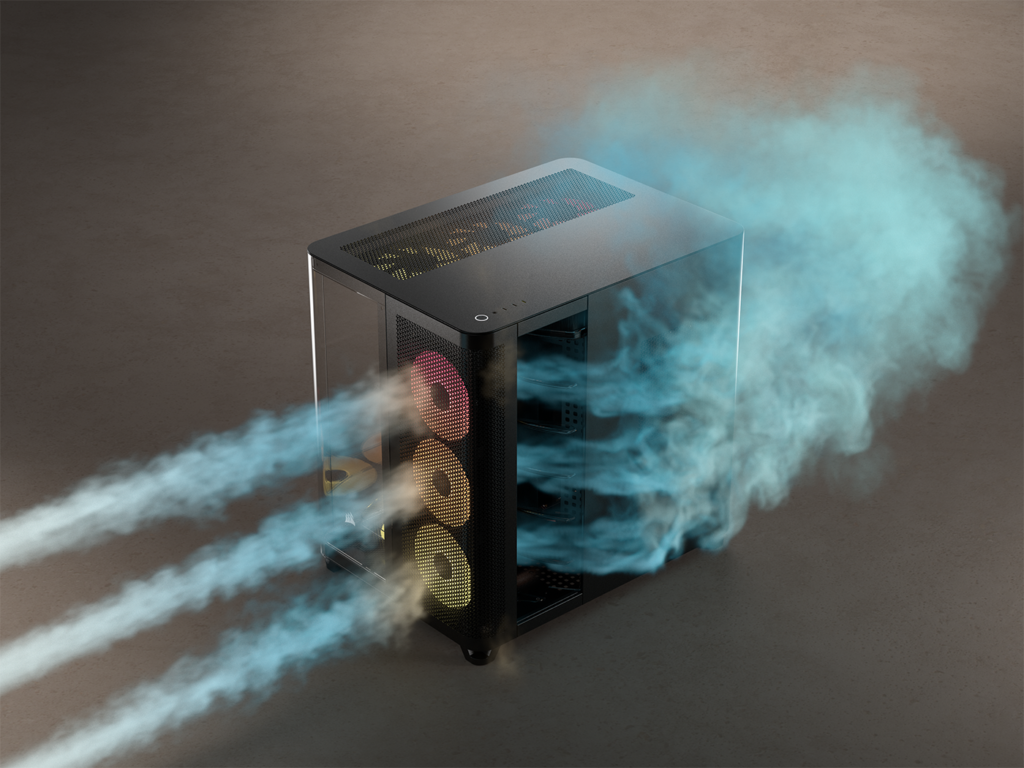
The front-most section is a dedicated, isolated chamber for the CPU cooler, designed primarily for a 360mm all-in-one (AIO) liquid cooler. Its airflow path is entirely self-contained: it draws cool, ambient air from the front, pushes it through the radiator, and immediately exhausts the heated air out a large vent on the right side. This creates a completely independent thermal loop for the CPU.
Chamber 2: The Main Showcase
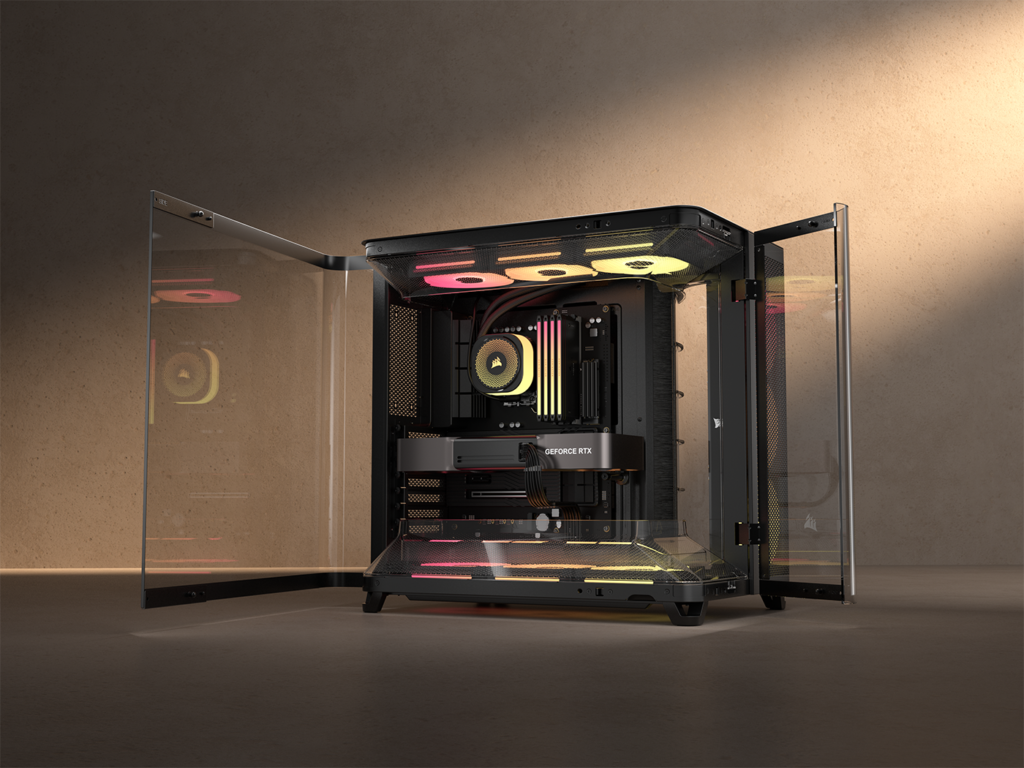
The central chamber houses the motherboard and graphics card within a stunning panoramic view created by two wraparound curved glass panels. It employs a ducted vertical airflow system. Three pre-installed reverse-rotor fans in a bottom duct pull cool air from outside and channel it directly into the GPU’s intake fans. Heated air is then exhausted through top and rear fan mounts.
Chamber 3: The Engine Room
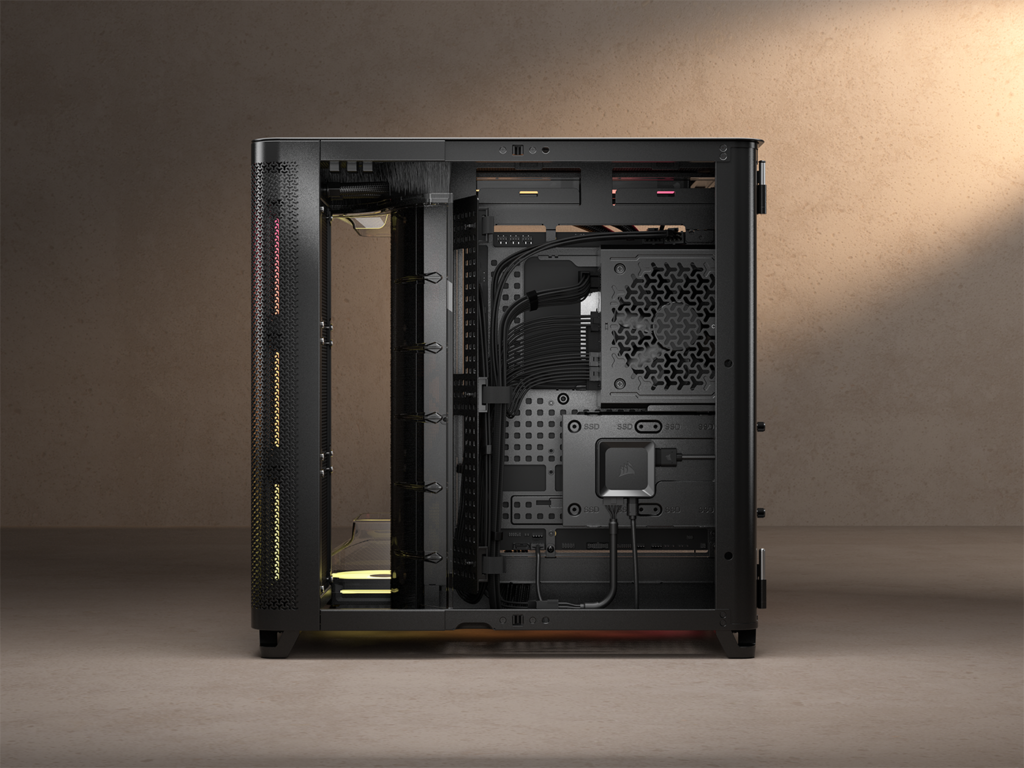
The rearmost chamber, behind the motherboard tray, conceals the power supply, storage drives (one 3.5-inch HDD and two 2.5-inch SSDs), and cabling. This chamber introduces Corsair’s new RapidRoute 2.0 cable management system, which features a modular “pegboard” for flexible cable tie-down placement. The case also fully supports the latest reverse-connector motherboards for a virtually cable-free build.
Specification Comparison: AIR 540 vs. AIR 5400
| Feature | Carbide AIR 540 (2013) | AIR 5400 (2025) |
| Chambers | Dual | Triple |
| Dimensions (HxWxD) | 415 x 332 x 458 mm | 467 x 340 x 470 mm |
| Window Material | Acrylic | Tempered Glass |
| Max GPU Length | 320 mm | 430 mm |
| Max CPU Cooler Height | 170 mm | 180 mm |
| Radiator Support (Max) | 1x 360 mm | 2x 360 mm |
| 3.5″ Drive Bays | 2 | 1 |
| 5.25″ Drive Bays | 2 | 0 |
| Front I/O | 2x USB-A 3.0 | 3x USB-C |
| Launch MSRP | ~$140 | $229.99 (ARGB) |
The Build Experience: Beyond the Spec Sheet
Corsair has packed the AIR 5400 with a host of innovations aimed at refining the practical experience of building a high-end PC.
- Aesthetics and Accessibility: The dual curved glass panels are mounted on a “French door” system with hidden hinges, allowing them to swing open for effortless access.
- Cable Management Innovations: The RapidRoute 2.0 pegboard and vertical nylon brushes (replacing rubber grommets) offer superior flexibility for routing cables.
- Builder-Centric Features: A built-in, adjustable GPU anti-sag arm is hidden from view, and the accessory kit includes a reusable screw box and Corsair’s proprietary QuikTurn screws for faster fan installation.
Despite the praise, early reviews note some minor critiques. Installing the AIO can be “fiddly,” the single 3.5-inch drive cage feels like an “afterthought,” and the all-USB-C front I/O is future-facing but may inconvenience users with legacy USB-A peripherals.
The State of the Market: Where Does the AIR 5400 Fit?
The Corsair AIR 5400 faces a field of established competitors, but it carves out a unique value proposition.
- vs. Lian Li O11 Dynamic Series: The O11 is a flexible “modder’s canvas.” The AIR 5400 is a more opinionated “performance machine,” offering a clear, engineered thermal advantage with its dedicated CPU cooling loop.
- vs. NZXT H7 Flow & Fractal Design Meshify 2: These cases are about “more” airflow. The AIR 5400 is about “smarter” airflow, using isolated channels to prevent thermal cross-contamination.
- vs. Hyte Y-Series: Hyte’s “fishtank” cases are optimized for showcasing a vertical GPU. Corsair’s design is optimized for the strict separation of thermal zones.
| Model | Corsair AIR 5400 | Lian Li O11 Dynamic EVO | NZXT H7 Flow (2024) | Fractal Design Meshify 2 |
| Price (MSRP) | $229.99 | ~$170 | $129.99 | ~$140 |
| Primary Layout | Triple-Chamber | Dual-Chamber | Single-Chamber | Single-Chamber |
| Cooling Philosophy | Thermal Isolation | Water-cooling Flexibility | Unrestricted Airflow | Unrestricted Airflow |
| Key Differentiator | Dedicated CPU AIO chamber | Reversible layout | Vertical PSU | Hinged mesh front |
| Aesthetic Focus | Panoramic Glass Showcase | Panoramic Glass Showcase | Mesh Performance | Mesh Performance |
The Verdict: A Bold Step Forward, But Is It for You?
After a thorough analysis, the Corsair AIR 5400 emerges as a highly specialized and ambitious chassis that successfully delivers on its primary promise of superior thermal management through isolation.
Early expert reviews confirm its engineering prowess. PCMag awarded the case an “Outstanding” 4.5/5 rating and an Editors’ Choice award, with benchmarks showing its isolated radiator design delivered a commanding first-place result in CPU cooling. This is balanced by KitGuru’s 8.0/10 score, which deemed the case “novel, effective and rather expensive”.
The consensus is that the triple-chamber concept is a proven success, but it comes at a premium price and with specific build requirements.
The ideal AIR 5400 owner is a performance-obsessed enthusiast running a top-tier CPU and GPU who will extract the maximum benefit from its thermal isolation. They are a builder already committed to using a 360mm AIO liquid cooler, who values a pristine aesthetic, and who relies primarily on motherboard-mounted M.2 SSDs rather than a large array of traditional drives.
Ultimately, the AIR 5400 is a worthy and ambitious successor to the Carbide AIR 540. It doesn’t just iterate; it innovates. For the specific enthusiast it targets, the Corsair AIR 5400 stands as a masterclass in purposeful engineering and one of the most compelling high-performance chassis of 2025.
